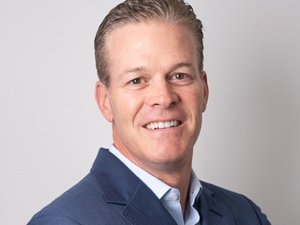Gret Glyer is known for always wanting to give back. In 2013, he headed to Malawi as an aid worker, where he funded and built over a hundred homes and a girls school. While crowdfunding for a few school projects, he posted updates on YouTube. To his surprise, people enjoyed it: They could actually see where their money was going towards.
But he was frustrated that there wasn't an easy way to fund projects without going through the slow, costly bureaucracy of traditional charities. So he started a for-profit company.
Fairfax, Va.-based DonorSee is the for-profit, "Uber for charitable giving," as Glyer would call it. The app allows users—mostly foreign aid workers—to post the pictures and stories of people in need. Those on the app can donate to the posts they choose; Often in nominal amounts. Original posters are then encouraged to post video updates showing how the money is being spent or reactions from the recipients.
The platform relies on the simple idea that people like to see how their money is used. Rather than putting your money into a blurry black hole that is supposed to fight a overarching cause, donors instead provide money to specified actions. That is, you can't solve world hunger, but you can buy lunches this week for Thuli, a 13-year-old from South Africa, and get a video response from her the next day.
The for-profit status, interestingly, is also important to DonorSee's success.
Nonprofit classification was originally intended to alleviate the financial pressures on charities by giving them tax-exemptions, so more money could be used for the intended cause. Glyer and others argue that the crossing-the-t's-and-dotting-the-i's required of nonprofits syphons too much money to the costs of running a large organization without the pressure to maximize profits that keeps spending in check. Eventually, he says, large charities become more concerned with their own interests and less concerned with the people they're supposed to be helping.
By classifying themselves as a for-profit company, Glyer says, they're able to operate leaner than a traditional nonprofit. Most importantly, the team is able to operate at hyper-speed compared to large charities, transferring money to recipients in days, instead of months.
To Glyer, that's vital. He often tells the story of a young Malawian girl who was bitten by a crocodile. She couldn't wait the estimated month for money to find its way down from a traditional charity, but an aid worker posted on DonorSee and had the money to get her help the next day.
"I have a 501(c)3 [nonprofit], it's not that I was too lazy," Glyer told DC Inno, talking about a separate nonprofit he set up while in Malawi.
The profits? DonorSee takes a 4 percent flat fee on all donations which, according to the website, is to "keep the lights on" for the roughly 10-person team. Additionally, the company's financial transactions are handled by Stripe, which takes a 2.9 percent and $0.30 fee per transaction.
It's not that I was too lazy.
According to DonorSee, other charities' administrative costs can be upwards of 40 percent, so they consider the roughly 7 percent transaction fees a selling point.
Unlike nonprofits, though, DonorSee won't have to disclose its spending, and some people are more comfortable with that than others. In DonorSee's model, the assurance given by nonprofit status is replaced by a direct response from people who receive the donations. It suggests that donors don't need audits and board reviews when they can actually see where the money is going. (DonorSee, donor do?)
The other potential problem is the ability for anyone to post asking for money—maybe a Nigerian prince with a picture off Google Images. Glyer says they're prepared for scammers with built-in measures to avoid abuse, though. The most reliable way, Glyer says, if you don't personally know an aid worker, is to donate to Staff Picks—projects posted by aid workers that DonorSee confirms are the real deal. Otherwise, users can choose aid workers with a significant following, with many past projects and video updates. Like a Facebook account, as a user's profile grows, it becomes more difficult to fake.
Glyer believes this is just one way DonorSee will improve as more users sign up. And expect DonorSee to grow. The company launched five months ago and are currently closing in on another round of funding.
Images courtesy of DonorSee




